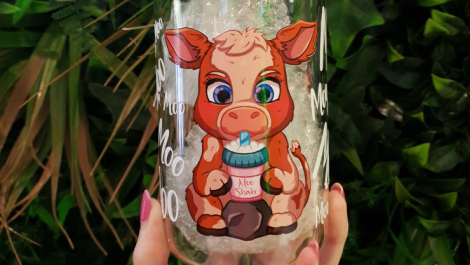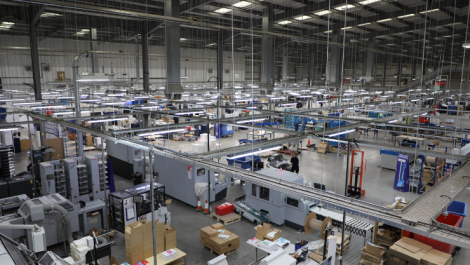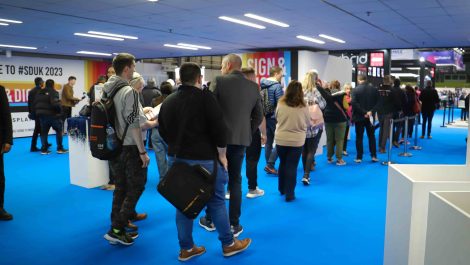For some time now textiles has been put forward as the next big trend in digital printing. Advances in technology and technique have opened up signage, decor direct-to-garment as viable ways for printers to make money and many have earmarked textiles as a significant opportunity. We spoke to people deeply involved in digital textile printing to get some insight on precisely what the future might hold…
Debbie McKeegan
FESPA textile ambassador and CEO of TexIntel
Digital textiles offer the textile industry the power to print sustainably, the perfect antidote to the waste generated by the buying patterns and technologies of the past. It’s interesting that this year was the 50th anniversary of Heimtextil, the largest textile show in the world, and an opportunity to witness the dramatic change in commerce during this time. Traditionally Heimtextil was a show where orders were taken, orders that kept factories across the globe busy for the year ahead. In 2020 the show has become a vital showcase and networking, sourcing event, for sure orders are taken, but not like the old days!
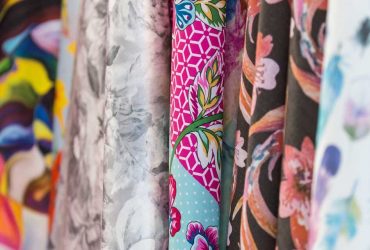
Textile buying patterns have changed and consumers are now demanding design diversity
Why is that so? Because textile buying patterns have changed, retail has a new footprint, e-commerce, and importantly the consumer demands design diversity. Digital disruption offers the textile industry the tool box to print sustainably. Print-on-demand is the new paradigm for the textile industry and software, inkjet technologies and smart factories deliver the solution. Although we are 20 years into the digital reform of print and the advancement of textile technologies alongside software, progress has accelerated in the last few years. Supply and demand always drives market change and the demand for sustainable production is paramount. Waterless technologies, pigment ink solutions, clean certified inks and sustainably sourced, and recycled fabrics are in demand. The consumer is now conscious of the historic pollution for which traditional production is credited, and the industry needs to deliver the products that the market demands.
Speed and efficiency are key to customised production, and we now have a host of options for digital textile printing. Super-fast single pass machines that reach up to 1200m/hr are being adopted in the East to fulfil the high volume textile needs of the West, and across the globe as machine sales increase we see the growth of emerging markets using medium volume industrial machines that top the scale at 400-600m/hr and a whole host of affordable entry level machines that print at 25-100m/hr. All of the above are incredibly energy efficient when compared to their analogue predecessors using very little water, a fraction of the electricity and all with a smaller machine footprint.
Yet the textile Industry as a whole has a long way to go to meet the needs of the eco-conscious consumer and the critical sustainability agenda. Global digital production is currently at just 5% of total printed sales worldwide. Growth is predicted at 17.5% year on year for the next 5 years, where we go from there can only be onwards and upwards…
Brett Platt
Textiles business manager, CMYUK
The digital textile printing industry will continue to grow, with some areas really making significant headway such as décor and interiors. CMYUK now offers polyester fabrics that mimic natural cottons, linens and silks. A big advantage of using polyester over natural fabrics is you can get some décor polyesters that are inherently flame retardant (FR), which for contract work such as hotels, hospitals and schools this is a must. Traditionally if a natural cotton or linen was used, the printed fabric would then have to be sent to have a FR coating applied, which is costly, adding extra processes and time.
There is an interest in viable, ecologically responsible materials. We are seeing the breakthrough of recycled polyesters made from the yarn from single use plastic bottles (PET) and other recycled polyester materials. We’re witnessing a rise in end-of-life concerns for materials. CMYUK is the exclusive distributor of Pongs textiles for digital print in the UK and Ireland. Pongs has full control over the weaving and finishing of its fabrics, and it only uses water-based chemicals in its coatings which means that our Pongs textiles are safe for recycling and are suitable for incineration for waste-to-energy processes.
Pongs has made great strides in producing polyester fabrics that meet the stringent demands of the signage/display markets. This means CMYUK can confidently supply customers with a consistent range of fabrics to cover many different applications i.e. black back for displays, backlit for light boxes, flag and stretch fabric for tension frame systems.
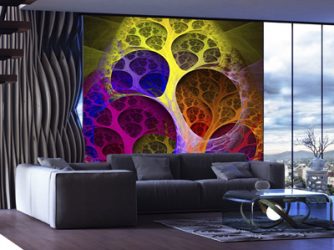
Pongs is CMYUK’s flagship fabric offering
Reshoring for décor and fashion will continue on its upward trajectory. The UK has always been one of the strongest in the world from a design point of view, but when our UK print mills started to close and manufacturing moved overseas we lost this manufacturing from the UK. However, digital printing is changing this story.
The trends towards fast fashion, short-runs, personalisation and quick delivery are underpinned by home grown digital textile printing that can react and handle the demands of this fast changing market. We expect to see a significant increase in décor applications, and personalisation will become even more acute.
Let’s not forget the hardware that is driving application possibilities. Traditionally dye-sublimation printing was always a two-step procedure, you would print first, and then put the print through a separate heat press for the fixation. However, the EFI Vutek 340i, a sublimation printer with inline fixation has changed all that. Taking up less room than a digital printer and a separate heat press, the 340i has made dye sublimation and its many applications available to all. It also conforms to other digital print processes, so once the printed fabric hits the take-up unit on the printer, it can be removed and put straight through finishing, no heat press required. It’s an absolute game changer.
Watch out for new digital print hardware to be launched in the next quarter, which again, will appeal to the growing décor and fashion markets. New technological advances in inks, and printer technology will continue to bring opportunities to print service providers, allowing them to open themselves to new applications.
Phil McMullin
Pro graphics sales manager, Epson
When analysing textiles in a ‘big picture’ way the most important thing to note is the ‘reshoring’ of textile production. In the latter half of the 20th century production of clothing and textiles moved abroad, to the likes of China and Bangladesh, but that trend is starting to change and production is moving back to the West.
This about-face is being driven retailers who are no longer stocking seasonal wardrobes, but are instead looking to offer new product lines each and every month. Naturally this means they will be selling far less of each garment and it simply isn’t economical to make a couple of hundred shirts in China and have them shipped across to Europe on the back of some tanker.
Peronalisation is also having an impact, as it becomes ever more popular and prevalent. Rather than being ‘on trend’ and wearing what everyone else is wearing, younger generations want clothing that is unique to them.

Mr McMullin described Lake Como as the Silicon Valley of digital textile printing
All of this makes the times very interesting for digital textiles printers. Certainly here at Epson we see textiles as a huge opportunity and we are investing a huge part of our research and development budget into this area.
It is very much our intention to offer the best range of options for textile printing, anywhere in the world. This means everything from desktop, direct-to-garment (DTG) printers all the way up to full scale, wide-format presses. We’ve been talking about our strategies to achieve this for some time, but now things are starting to crystalise and products are being brought to marker. I can’t talk much about it yet, but there will be launches at drupa later in the year, we have big plans for both DTG and dye-sub, so watch this space.
We are also proud to offer the Monna Lisa series, a fully integrated system for industrial digital printing onto textiles. These are roll-to-roll printers that use Epson inks and heads to produce truly exceptional printing results. The project is based in the ‘Digital Textile Valley’ at Lake Como, Italy and the mere fact that I can use that label shows just how fast this area is growing.
Another key thing to remember, or maybe to learn, is that textiles is a relatively easy market for digital printers to move into. For example if you have ever produced soft signage work, then you will already be familiar with many of the skills needed to produce textiles. As for the financial aspect, this isn’t nearly as steep a hurdle as many people think. Our SureColor F2100 is a DTG press which will provide everything you need to start producing personalised clothing, the 24in option retails for £1800 and its 40inch big brother is available for less than £5000.
The important thing to remember is that when it comes to textile printing the barriers for entry, such as they are, are tumbling down. This is a growth area, simply and affordable to break into, and I expect a lot to happen in the near future.

